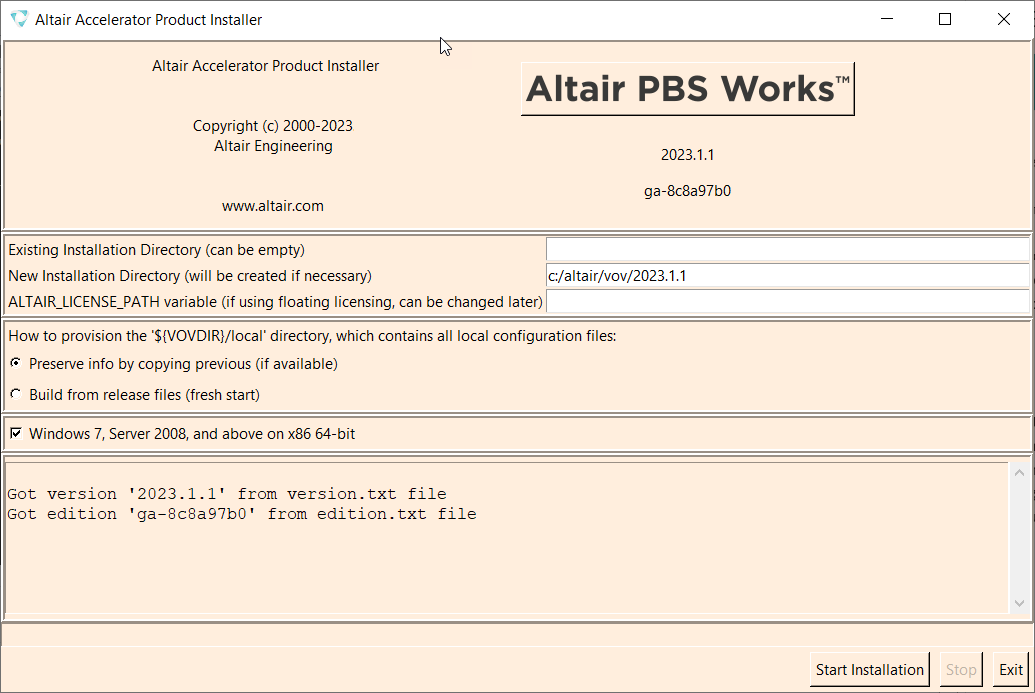Installation via the Graphical User Interface
The GUI installation procedure is implemented with a single dialog, where you enter information that tells the install program what to do.
Start the Installer Graphical User Interface for your platform as shown below. The GUI installer uses the X-Windows technology for the Graphical User Interface. If you are running on a remote UNIX system in X-windows, be sure your DISPLAY environment variable is set properly.

-
Change the working directory to the staging directory
where you downloaded the tar files and extracted them, and run the GUI install
script install.sh.
The installation dialog appears. The first field shows the path to the current release if one exists. This should be empty because this is the first time Altair Accelerator products have been installed.
-
In the New Installation Directory field, enter the full
path to the desired location.
The new installation directory can be created automatically, if necessary.
-
Set the ALTAIR_LICENSE_PATH
variable field to the license server location.
The value of ALTAIR_LICENSE_PATH can be specified in one of two formats:
- As port@host (recommended):
<port>@<host> - As a full path to the license file:
$VOVDIR/local/almlicense.lic
- As port@host (recommended):
-
In the Local Directory Option, select Build from release files
(fresh start).
This tells the installer to make new files within the common/local directory and to initialize them with files from within the baseline release.
Managing the local directory when doing an install is an important topic for later when you do an upgrade. You can read more about it Local Directory.
-
Select one or more platforms on which you wish to install.
This directs the installer to place the binary executables for these machine types into the installed directory structure. The files will be placed within subdirectories named for the platform. The installed files for each platform will come from the staging area where you have downloaded and extracted them.
The installed files for each platform will come from the staging area where you have downloaded and extracted them. You should only select platforms here that match the platform-specific install files you have downloaded from the website and extracted into the staging area.
If you are installing on a UNIX system, you could select the Windows platform here if the Windows file (win64.tar) was extracted into the staging area. The Window binaries will be installed on the UNIX machine as files within the win64 platform subdirectory.
The intention of platform selection is to provide executable files in the file system on this machine, for each platform in the network. This enables each remote machine to access the executables of their type by way of NFS, without needing to do an install of files on any other machines.
-
Click Start installation to start the installation. It
normally takes a few minutes to run, depending mostly on the speed of your
disk.
During the install, the program will write messages into the bottom section of the dialog, which is a scrollable region. The messages are also written to a log file on disk in the new installation directory, named install<timestamp>.log.
- When the installation is done, click Exit.
- You can review the install log for errors and warnings. The last few sentences of the log file remind you to do something if you are installing Accelerator. This subject is explained in For Accelerator Installation Only.